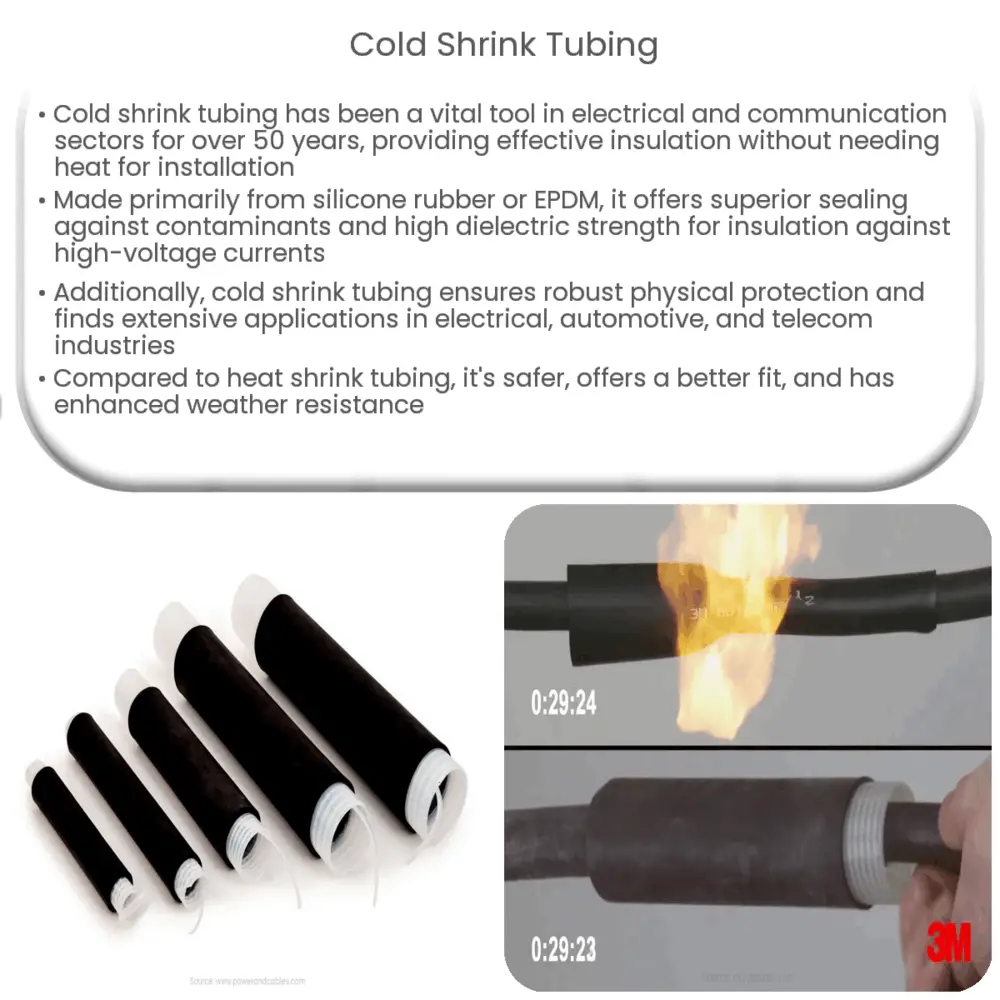Explore the importance, features, and applications of cold shrink tubing in electrical and communication industries.

Cold Shrink Tubing: An Essential Component in Electrical Insulation
For over five decades, cold shrink tubing has remained a critical tool for providing effective insulation in various industries, notably in electrical and communication fields. Born out of the necessity to simplify installations while still ensuring reliable, durable, and weather-resistant protection, cold shrink tubing has evolved into a versatile tool loved by engineers and technicians alike.
The operational premise of cold shrink tubing is inherently simple. These tubings are factory-expanded and placed onto a removable plastic core. During installation, the core is detached, causing the tubing to shrink snugly over the item being covered. This simple process eliminates the need for heat sources typically required in heat shrink tubing, which is its main advantage.
Material Composition and Key Features of Cold Shrink Tubing
Generally, cold shrink tubing is made from silicone rubber or EPDM (ethylene propylene diene monomer), materials lauded for their excellent flexibility, resilience, and weather-resistance. Silicone-based cold shrink tubes tend to offer superior performance in extreme environments, handling both high and low temperatures with ease.
- Superior Sealing: Cold shrink tubing is highly regarded for its superior environmental sealing against water, dust, and other contaminants. This makes it ideal for outdoor applications where exposure to harsh conditions is a norm.
- High Dielectric Strength: The materials used in cold shrink tubing possess high dielectric strength, offering excellent insulation against high-voltage currents. This characteristic is crucial in applications involving high voltage or RF cables.
- Physical Protection: Besides providing electrical insulation, cold shrink tubes offer robust physical protection against mechanical impacts, abrasion, corrosive substances, UV radiation, and ozone. This ensures a long service life of the covered components.
Applications of Cold Shrink Tubing
Cold shrink tubing is widely used across multiple sectors. In the electrical industry, it’s commonly used for insulating splices, terminations, breakouts, and connector interfaces in low, medium, and high-voltage applications. Telecom professionals use cold shrink tubing for sealing coaxial cable joints and similar connections.
In the automotive sector, this versatile product provides effective insulation for battery cables and other electrical connections. Industrial maintenance, repairs, and operations also benefit from the convenience and reliability of cold shrink tubing. As technology evolves, new applications continue to be discovered, further solidifying the relevance of this indispensable tool.
Advantages of Cold Shrink Tubing Over Heat Shrink Tubing
The advantages of cold shrink tubing over heat shrink tubing are numerous. Firstly, the installation process of cold shrink tubing is safer as it does not require a heat source, avoiding potential injuries and fire hazards. Secondly, it offers a more reliable fit as the tubing naturally conforms to the shape of the cable or joint, ensuring a tight, consistent, and watertight seal. Furthermore, cold shrink tubing offers superior resistance to adverse weather conditions and UV radiation compared to heat shrink tubing, making it a better choice for outdoor applications.
Installation of Cold Shrink Tubing
Installation of cold shrink tubing is a straightforward and user-friendly process. The tubing is first expanded and placed onto a removable core. The installer slides the tubing over the cable or joint, aligns it correctly, and then removes the core. The tubing naturally shrinks to form a tight, consistent seal. No special tools or heat source are needed, making it a convenient choice for field installations and quick repairs.
Considerations When Choosing Cold Shrink Tubing
- Size: Choose a tube that can comfortably shrink to seal the diameter of the item without over-compression. The manufacturer typically provides a range that the tube can comfortably cover.
- Material: Depending on the application, different materials might be preferable. For instance, silicon offers better performance in extreme temperatures while EPDM may be more suitable for general-purpose applications.
- Resistance Properties: Ensure that the cold shrink tube has adequate resistance to the conditions it will be exposed to, such as UV radiation, chemicals, abrasion, or high voltage.
Conclusion
In conclusion, cold shrink tubing is an essential tool in the electrical and communication industries due to its convenience, safety, and performance. Its excellent sealing, high dielectric strength, and robust physical protection make it an indispensable resource for technicians and engineers alike. As technology advances, it is expected that cold shrink tubing will continue to evolve, offering even more benefits and applications in various industries. Therefore, understanding its functionality, features, and installation process is beneficial for anyone involved in these fields.

